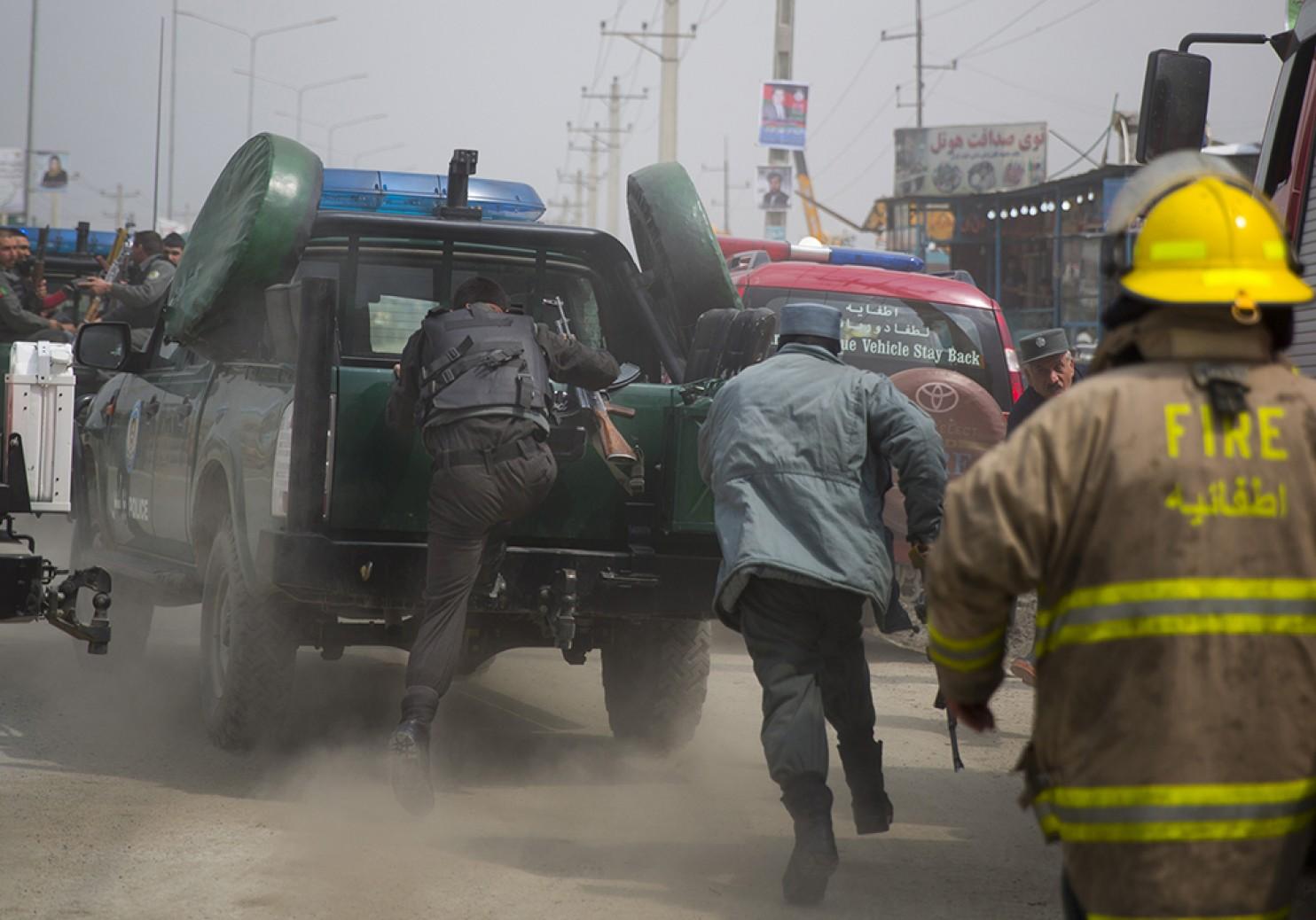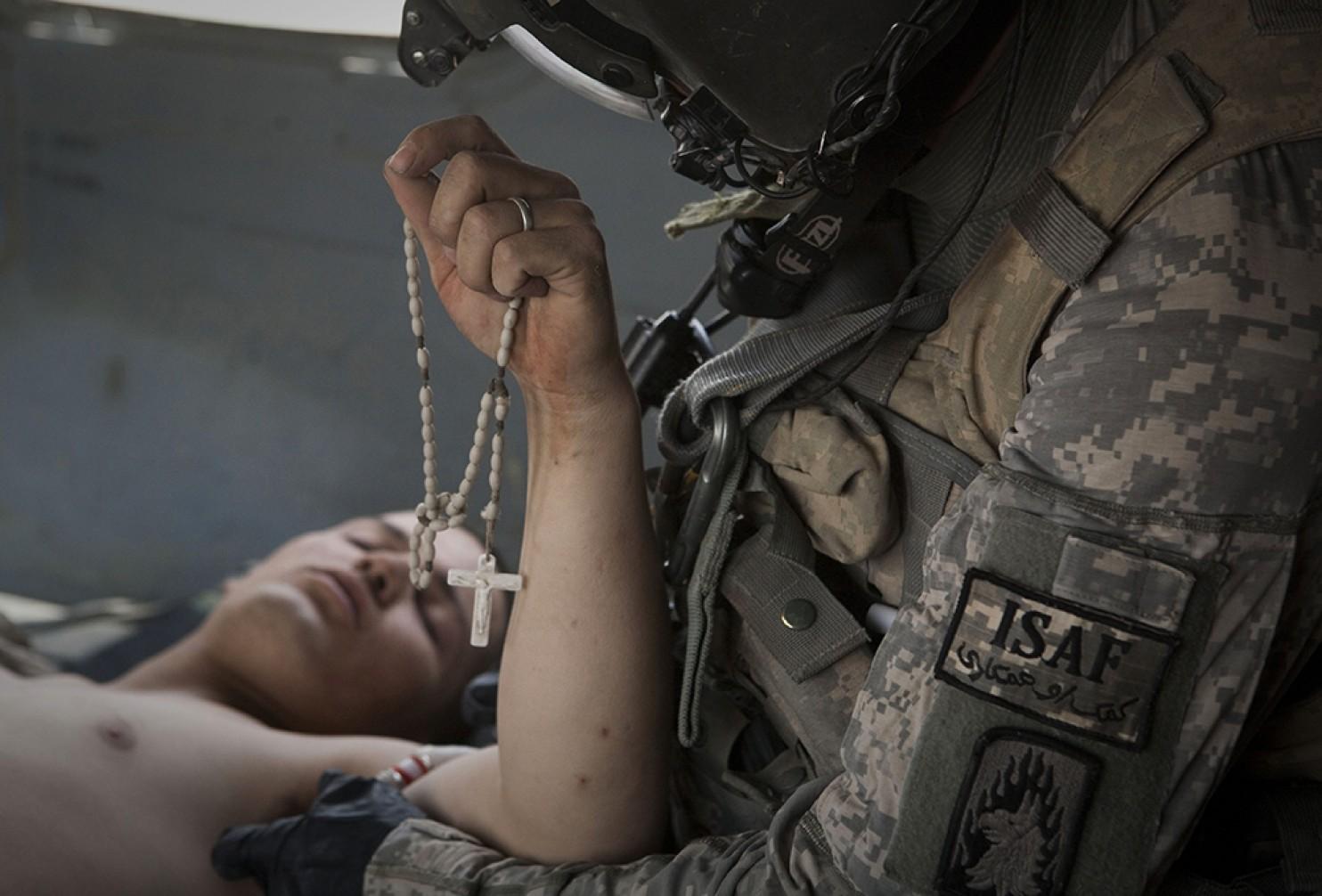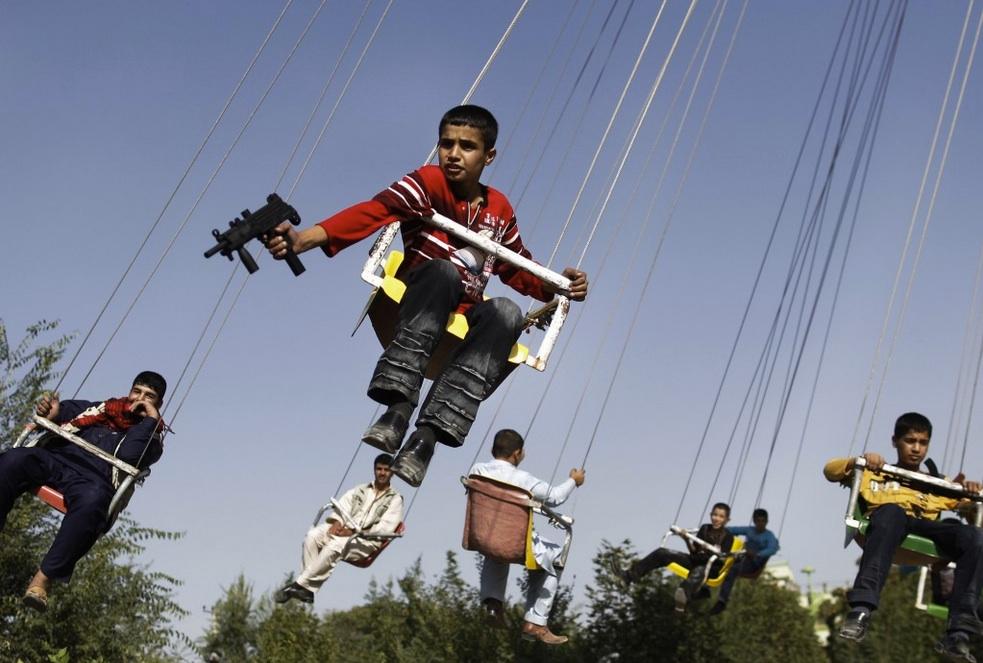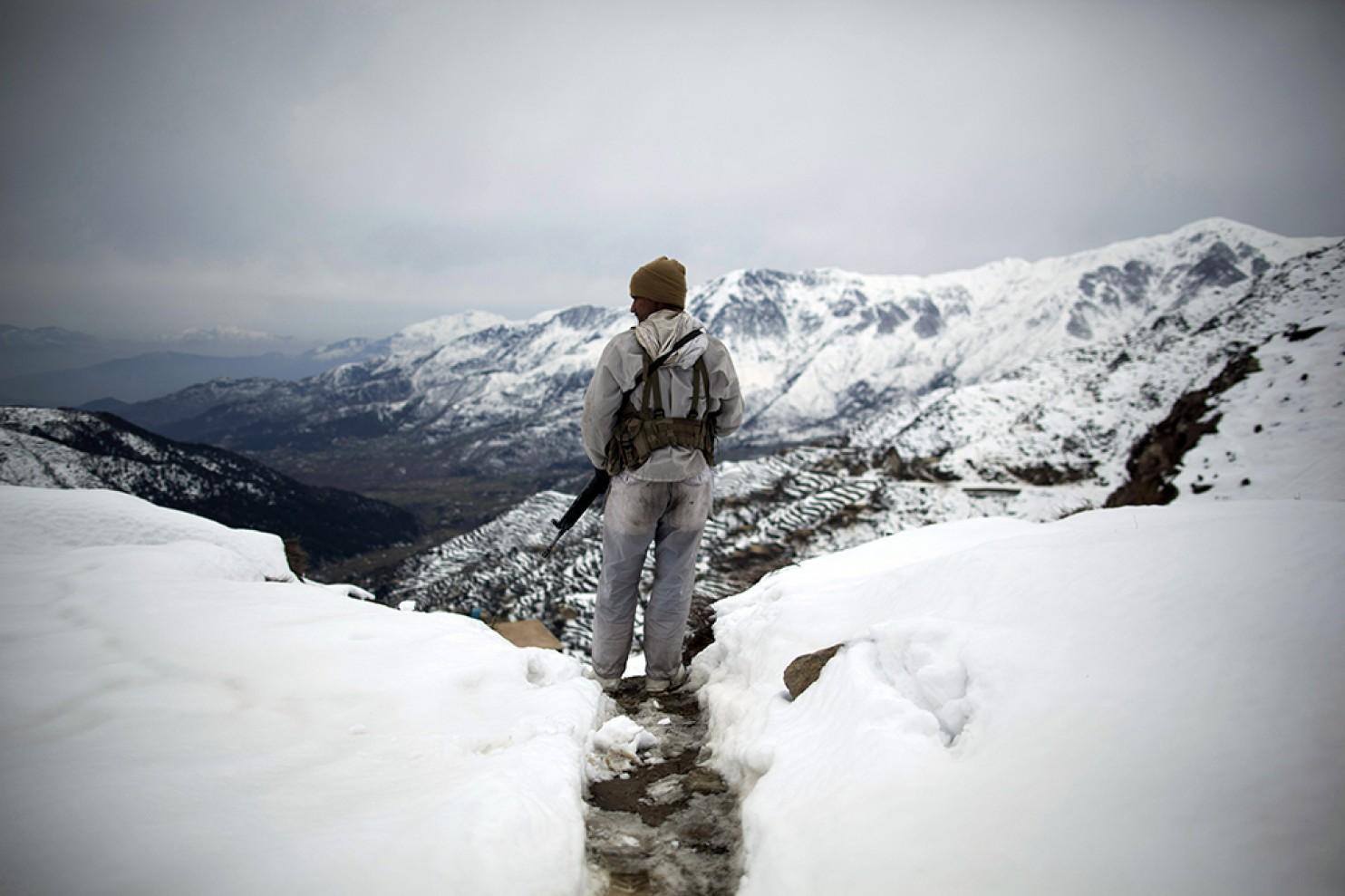(EDITOR'S NOTE: Legendary Associated Press photographer Anja Niedringhaus was slain in April 2014 while reporting in Afghanistan. On March 28, the AP reported that her killer was sentenced to 20 years in prison.)
It was almost three years ago that I found myself seated upon the couch of a former classmate and mentor in her apartment on the east side of Manhattan. A seasoned journalist who once worked for The Associated Press, she had traveled to more locales and navigated harsher political climates than I had in my four years in the Marine Corps. Her walls were adorned with ceremonial clothing, handcrafted keepsakes, and the kinds of objects that exude the depth of character and experience fitting of a woman who had spent years traveling the world in order to bring it closer to us.

On her coffee table sat a book with a subdued gray cover and cloth binding, which upon closer examination revealed the faint outlines of a military convoy traveling across the desert. She said that a good friend of hers had given her that copy after recently having it published, and she was excited to see my immediate interest as I carefully thumbed through the images contained therein.
The pictures were black and white, but their subjects shone through clear as day. A Marine fire team clearing a building in Fallujah, Iraq, families fleeing Basra with dark plumes of smoke rising up behind them, and an Italian army soldier gazing into the destruction of a suicide bomber’s attack in Nasariyah.
There were also pictures of a Northern Alliance soldier stripping the boots off of dead Taliban prisoners in Mazar-i-Sharif, Afghanistan, a Libyan rebel evacuating civilians in Bin Jawaad, and the blood-stained wall behind the lifeless bodies of executed Gaddafi soldiers in Benghazi. On page 51, a Marine is crouched with one hand over his eyes in front of the memorial for his 31 fellow warriors who were killed at Camp Korean Village in 2005, Ar Rutbah, Iraq.
The photojournalist who had taken these pictures was Anja Niedringhaus, and the scope of her work was incredible.

She had seen the faces of war and captured them from behind her lens, quite often placing herself at great personal risk. What struck me most was the candid depth of her pictures. She didn’t shy away; she wasn’t just another war-tourist seeking a quick high and a souvenir. She lived it: the stale sweat, the sand, the blood, the joy of a successful op when everyone comes home and the deep anguish of loss when someone you may have just been talking to moments ago doesn’t. You can’t fake that. She was the woman in the arena and she fought the best way that she knew how.
All told, there are 180 pages in “At War,” a body of work pieced together over almost a decade. Would you like to guess how many pictures Anja appears in? Not one. She isn’t in any of the pictures because she chose to focus on what was happening right in front of her. She knew how important it was to honestly portray the wars and the people who fought them as they were. She also knew that if she wanted the story she had to go to the source — and if she wanted the source she had to be willing to endure whatever physical, mental and emotional obstacles that may be in her way.

That was what led her to Afghanistan in April 2014. She was covering the presidential elections with Kathy Gannon, her longtime friend and fellow AP reporter.
They were in the backseat of a nondescript sedan waiting inside a heavily fortified police compound in a remote district in eastern Afghanistan when an Afghan policeman walked up to their car and opened fire with an AK-47. Anja died instantly and Kathy was struck multiple times, leaving her severely wounded and clinging to life beside the body of her best friend, their shoulders pressed against each other.
It was only a few months later that I sat across from Kathy in that same apartment on the east side of Manhattan. Kathy was surrounded by friends and family. Her arm was slung across her chest and pillows pressed along both sides of her body to help stabilize her torso. She spoke clearly and intently about how she had been medically evacuated, the bureaucracy involved in getting her treated, the surgeries that she was scheduled to have, and the ballistics behind a 7.62 mm round striking and passing through portions of her body.
Then she looked at me, someone whom she had just met, and asked how I was doing and what I thought about the present state of affairs in Iraq. It was unreal; she was a consummate professional.

The reason I felt it was necessary to share this was to bring to light a simple fact: When you are committed to something, when you live it, breathe it, wrestle with it and allow it to sink deeply into your subconscious and vie for both your thoughts and emotions, it becomes something that you won’t ever forget. As Nietzsche said, “if you gaze long enough into an abyss, the abyss will gaze back into you.”
Anja committed herself to her craft, and she never sought to misrepresent what she did or who she was. She remained true to herself, her colleagues, and her subjects.
There are some journalists, such as NBC’s Brian Williams, who would do well to revisit this concept. It is impossible to misspeak, misremember, or otherwise erroneously attribute a harrowing or valorous act to oneself in good conscience. In doing so he has violated the very ethic that the media is entrusted to preserve: integrity. In receiving praise and attention through fabrications of danger, he has done an immense disservice to people like Anja and Kathy, and I refuse to stand idly by and allow his actions to overshadow theirs.
UPDATE: In March, freelancer Heidi Levine won the first-ever Anja Niedringhaus Award for courage in photojournalism. Levine bravely chronicled the Israeli assault on Gaza in the summer of 2014. “Anja was both a photojournalist and a person I admired, respected, and often consulted with in the field under extreme circumstances," Levine told the International Women's Media Foundation, which gave out the award. "There was an incredible professional bond and sense of trust, a sisterhood so many of us felt, and she is greatly missed by us all.”

Brian Morgan served in the US Marine Corps from 2004 to 2008, including as an airborne radio operator/loadmaster at al-Asad air base, Iraq. He is a 2013 graduate of Columbia University who works at Morgan Stanley in New York. This article originally appeared in Stars and Stripes.
